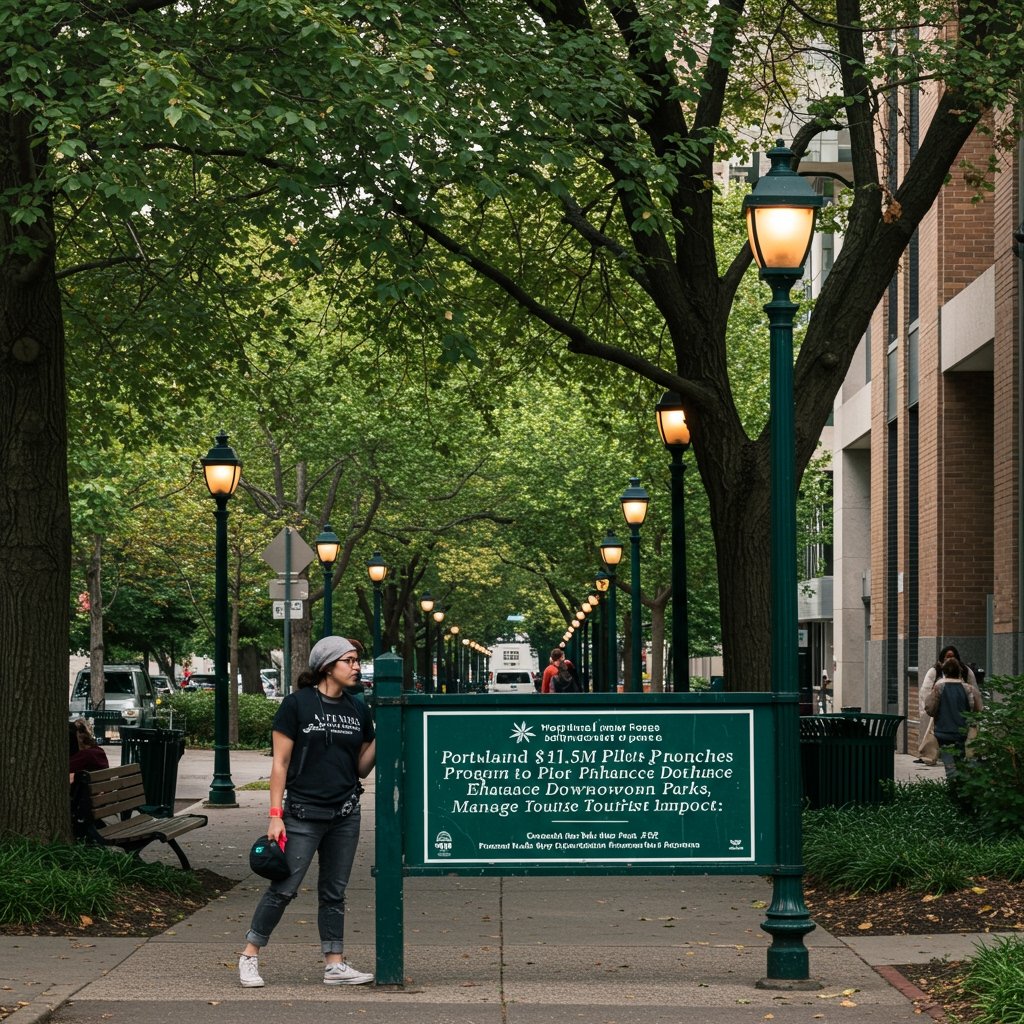Portland, OR – The Portland City Council has greenlit a significant $1.5 million pilot program aimed at developing and implementing sustainable tourism practices within its bustling urban core. Approved on May 22, 2025, via Ordinance 2025-A, the initiative targets four key downtown park locations, including the prominent Tom McCall Waterfront Park and Director Park. Overseen by the Portland Parks & Recreation department, this program is a direct response to the growing impact of visitor traffic on these vital public spaces. It will test innovative measures such as new waste management systems, enhanced visitor education, and a novel reservation system for peak times, reflecting the city’s commitment to preserving its parks for both residents and a rising number of visitors.
Addressing Increased Usage and Resource Strain
This targeted investment follows a recent report highlighting the increasing use of Portland’s downtown parks by individuals from outside the city. The report indicated a notable 15% increase in park usage by non-residents over the last two years. While beneficial for local businesses and the city’s image, this surge has placed considerable strain on existing resources. Park infrastructure is experiencing accelerated wear, and maintenance crews face significant challenges managing waste and upkeep. The delicate balance between public access and ecological preservation within these vital urban oases is being tested. The program under Ordinance 2025-A seeks to address this imbalance, providing funds to experiment with strategies specifically designed for the pressures of high visitor density, particularly during busy tourist seasons, thereby protecting the long-term health and accessibility of these cherished urban green spaces.
Program Components: Waste, Education, and Reservations
The $1.5 million pilot is structured around three core components designed to tackle the identified issues head-on. First, new waste management systems will be implemented across the four participating parks. This involves testing advanced solutions like potentially deploying solar-powered compacting bins, increasing collection frequency during peak periods, and improving on-site sorting facilities to reduce litter and streamline maintenance efforts. The aim is to make responsible waste disposal easier and more effective for park users, ultimately contributing to cleaner public spaces.
Second, enhanced visitor education signage will be introduced. Recognizing that clear communication is vital, new signage strategies will be tested. These may involve more prominent, potentially multilingual signage and the use of modern design or digital elements to better inform visitors about park etiquette, environmental best practices, and the importance of minimizing their footprint. The goal is to foster a sense of shared responsibility and improve compliance with park guidelines through clearer, more engaging messaging.
Third, and perhaps most distinct, is the implementation of a limited-duration reservation system. This system will apply only to high-traffic areas within the four pilot parks and will be in effect solely during peak summer weekends. Designed not to restrict overall access but to manage density in sensitive or popular zones, it aims to distribute usage and prevent overcrowding that can degrade infrastructure, harm vegetation, and diminish the user experience. Details on the system’s mechanics are being finalized, but it represents an innovative approach to balancing high demand with preservation needs in specific areas during the busiest times.
Goals and Evaluation Timeline
Success will be measured against specific targets set by the Portland Parks & Recreation department. A key goal is to achieve a 30% reduction in litter across the four pilot parks by the conclusion of the initial phase. This will be assessed through a combination of quantitative data from waste collection and qualitative observations of park cleanliness. The program also aims to significantly minimize infrastructure wear and tear, with evaluation likely involving regular assessments of park assets like paths, benches, and plant life, alongside tracking maintenance records.
Initial results from the pilot program are expected by October 2025. This timeline allows for the interventions to be implemented and observed throughout the busy summer tourist season. The data collected and analyzed by the Portland Parks & Recreation department will be crucial for evaluating the effectiveness of each component. Based on these findings, the city council and department will determine whether to refine, expand, or adjust elements of the pilot, potentially leading to the broader implementation of successful strategies in other parks facing similar pressures across the city.
Perspectives, Challenges, and Opportunities
City officials view this pilot as a critical, experimental step towards developing a sustainable model for urban park management in a growing city popular with tourists. Oversight by Portland Parks & Recreation ensures direct implementation and adaptation as needed. Potential challenges for the program include public acceptance of the reservation system, ensuring consistent visitor engagement with new educational efforts, and the logistical complexities of managing the various new systems.
However, the program also presents significant opportunities. Successful implementation could provide a replicable blueprint for managing tourism impacts in urban parks not just in Portland, but in other cities facing similar challenges. It offers a chance to innovate in park management practices, enhance the visitor experience by reducing overcrowding and improving cleanliness, and most importantly, safeguard the long-term ecological and physical health of Portland’s valuable downtown green spaces for future generations of residents and visitors alike. The focus remains firmly on finding practical, effective solutions that allow Portland to continue welcoming visitors while essential public assets are preserved.



















